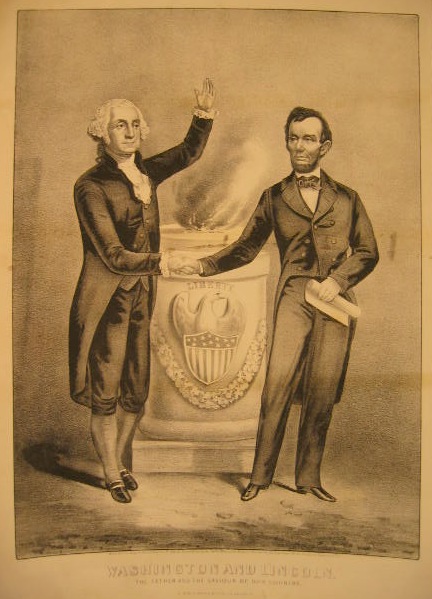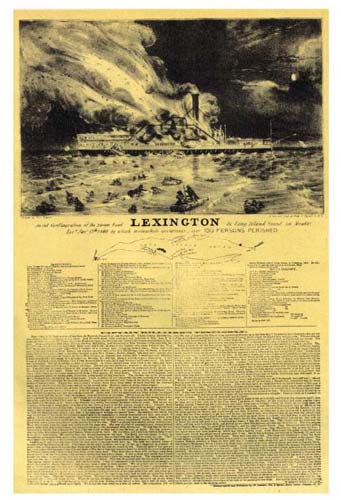
 Custom Search
|
| boat plans |
| canoe/kayak |
| electrical |
| epoxy/supplies |
| fasteners |
| gear |
| gift certificates |
| hardware |
| hatches/deckplates |
| media |
| paint/varnish |
| rope/line |
| rowing/sculling |
| sailmaking |
| sails |
| tools |
| join |
| home |
| indexes |
| classifieds |
| calendar |
| archives |
| about |
| links |
| Join Duckworks Get free newsletter CLICK HERE |
|
|
| Currier and Ives - Part One |
Prints as Windows to Our Nautical Pastby Mike John - Grandchester, Queensland - Australia and Paul Austin - Dallas, Texas - USA Part One - Part Two - Part ThreeThe prints of Currier and Ives act as a porthole or time capsule to the world of vessels. Author and historian Bryan Le Beau has stated it well, "…a window on times past and times to come…"1 Our interest is in the ships, so to us the Currier & Ives prints are beautiful. Arguments about whether or not the prints are art are of no real interest. Currier and Ives would well argue it was not about the art for them either - it was the moment or event brought to life on print and sold to everyone who wanted it. It was information and entertainment. They were businessmen, brilliant businessmen. They joined commerce and art. They were not historians either. They produced things to sell.2
This print above is an example. Washington and Lincoln lived in different centuries, so they never shook hands. There is an element of fiction to some of the Currier & Ives designs. Author Crouse makes the point that in some prints racing boats depicted were never at the same race. Being historically accurate was not the point of a Currier & Ives print. They could not afford such a huge staff of artists all over the country, rushing to this event and that. Journalism in New York at the turn of the century was called, yellow journalism. The color refers to the cheap paper used to print hundreds of copies every day. But the expression refers to the gross, shameless exaggeration the papers used to sell copies, every last copy. Paper of the times made stories up that never happened, they exaggerated danger some famous person was in, they inflated the number of ships which had arrived on a certain day, they exaggerated the wealth of the wealthy, especially if it could include immoral behavior at parties. This situation was so blatant Mark Twain became famous for his sarcastic attacks upon the exaggerations and inaccuracies of the papers, magazines and pamphlets. So a Boston paper run by Horace Greeley reported the death of Twain, while he was on the Grand Tour of Europe! When Twain returned from Europe by ship, he stepped back on to American soil, holding up the Boston newspaper with the headline of his death, saying in classic Twain fashion, "The reports of my death have been somewhat exaggerated." What C&I did was show the public what the presidential candidates really looked like. They put prints of yacht races in the homes of those who never owned a boat. They were the social record keepers. They illustrated city street scenes, the latest clothes, dogs and horses, and the newly emerging American rural scene. They promoted the art of this country and culture by reproducing famous paintings for everyone. Keep in mind, copyright and defamation were then quite loose compared to today. Ironically, we all benefit from this, as we can see the art, the lives, the loves, the social preferences and gatherings of a time long before ours. While the many C & I prints are unique, what might their back-story be? This is our interest. So who was Nathaniel Currier and what is the story behind the Lexington print below? 1 LeBeau, B. (2001). Currier and Ives. Washington, D. C.: Smithsonian Institution Press, p. 2. The Lexington - Death by Fire, Cold or DrowningThe year was 1835. In New York, newspapers ruled. They didn't merely print news, but ethnic entertainment, cartoons, sarcasm, local neighborhood stories such as Mrs. Fiddlesticks finding her dog after three terrible days, and any sort of anecdote which would fill out a column. Nathaniel Currier's first dramatic print was of the Planter's Hotel fire. That the hotel was in such an exotic place as New Orleans only made it juicier. Imagine the young boys hawking newspapers, holding them tight in one hand with their account of the fire, yelling, "Fire in Dixie! Dignitaries run out in their underwear!" Yet it was three days later, right in venerable old Long Island Sound, that Currier produced the lithograph which would make him famous, putting even the process of lithography on everyone's mind. On a cool dark night in 1840, a fire erupted like a volcano aboard the steamboat Lexington, with nearly 100 passengers scrambling for a few lifeboats, the crew jumping overboard, flames swallowing the wood steamer like some gigantic sea monster. The seven column account of the fire contained several contradictions, other accounts differed, too, but there was no mistaking the print Currier made. Currier had actually been in the office of his newspaper editor, arguing about his work, when the news of the fire arrived. Currier seemed to know the big moment when it came. He created the print for the story in the New York Sun and for himself. From then on, the public trusted Currier. The lower left hand corner had the name, W.K. Hewitt, who drew the original lines and layout while the lower right hand corner had the name of Currier, as the one who did the lithograph. He included his company's name and New York address. Newspaper presses ran day and night, filling the demand for the print. Currier's firm shipped prints to other cities, making the company a national entity. All of this happened in the space of a few days. Currier had to learn fast, and he did. He realized the potential of an image to report the most sensational news that print could not. If ever there was an incident that proved a picture is worth a thousand words, this was the one. It opened up the concept that Currier had an audience around the country for certain types of subjects such as people, clipper ships, steamships and trains. It opened up the idea that quiet scenes with people in small towns or parades or scenes with children would have an appeal all their own. At the same time, prints of yacht races, auto races, high society would have their own specialized appeal. Currier learned fast how to truly be, Printmaker To The American People. What seemed to be the key to the success of Currier was that he was on the fringe of many movements in New York without offending anyone. He joined the Presbyterian Church without being an active member. He became a member of the Governor's Guard Artillery without any active duty. He was known to be philanthropic without taking part in any single reform movement. What he did better than anyone else was to tie the lithograph to America's history and culture. What is the story behind this print? The steamship Lexington was a formidable vessel. This was no ordinary wooden vessel, built to the specifications of the past. It was built by Bishop and Simpson in New York with the keel laid down in September 1834. Construction was supervised by its owner Cornelius Vanderbilt and it was one of the ships servicing the New York to Boston route. She was 220 feet long, 26 feet beam, and had a total tonnage of 488. She was made from white and yellow pine, chestnut, locust and cedar. The engine was constructed at the West Point Foundry and was a modern efficient engine for the time. It had a "walking beam" connection mechanism, activated by a 48-inch-diameter (1.2 m) steam cylinder with an 11-foot (3.4 m) stroke. The Lexington was sumptuous with resplendent teak deck railings, entryways, staircases, and paneling. It had a big cabin incorporating a lounge and dining room. The deck lighting was exquisite as were the drapes and furniture. Later, she was altered to accommodate night travel. Vanderbilt sold the reportedly fastest ship on Long Island to the New Jersey Steam Navigation Company for $60,000 who altered the ship to burn coal instead of wood.6
The Sydney Gazette and New South Wales Advertiser (1836), from far away Australia, wrote of the Lexington's first voyage from an account in the New York Journal of Commerce. This account gives an interesting and surprising insight into the Lexington. The ship is "elegantly fitted up" and is airy and pleasant.7 More importantly, the Lexington was said to be fast and easy in the water, faster than it was thought possible two years before. On one section of her trip the hull speed was twenty miles per hour.8 The ship set records for her runs. That night, the outside air temperature was approximately zero to minus four degrees Fahrenheit, too cold for any of the passengers to be sauntering the decks. Captain George Child was on duty, as Captain Jacob Vanderbilt (Cornelius' brother) was ill, with pilot Captain Stephen Manchester at the helm. The steamship was at full speed steaming along Long Island Sound, four miles off Eaton's Neck, when fire was discovered. It was already 7:00pm when the fire spread rapidly. The crew fought the fire but they were losing the battle. The engine room crew were forced to leave the room with the engines still running, full steam ahead. The Pilot already spun the helm southeast towards the shore of Long Island Sound but the rudder control ropes burned through, rendering the helm useless. Out of control, the ship whipped east away from shore. 9 6 Wikipedia, (2015). Lexington (steamship). |
To comment on Duckworks articles, please visit one of the following:
|
 |





